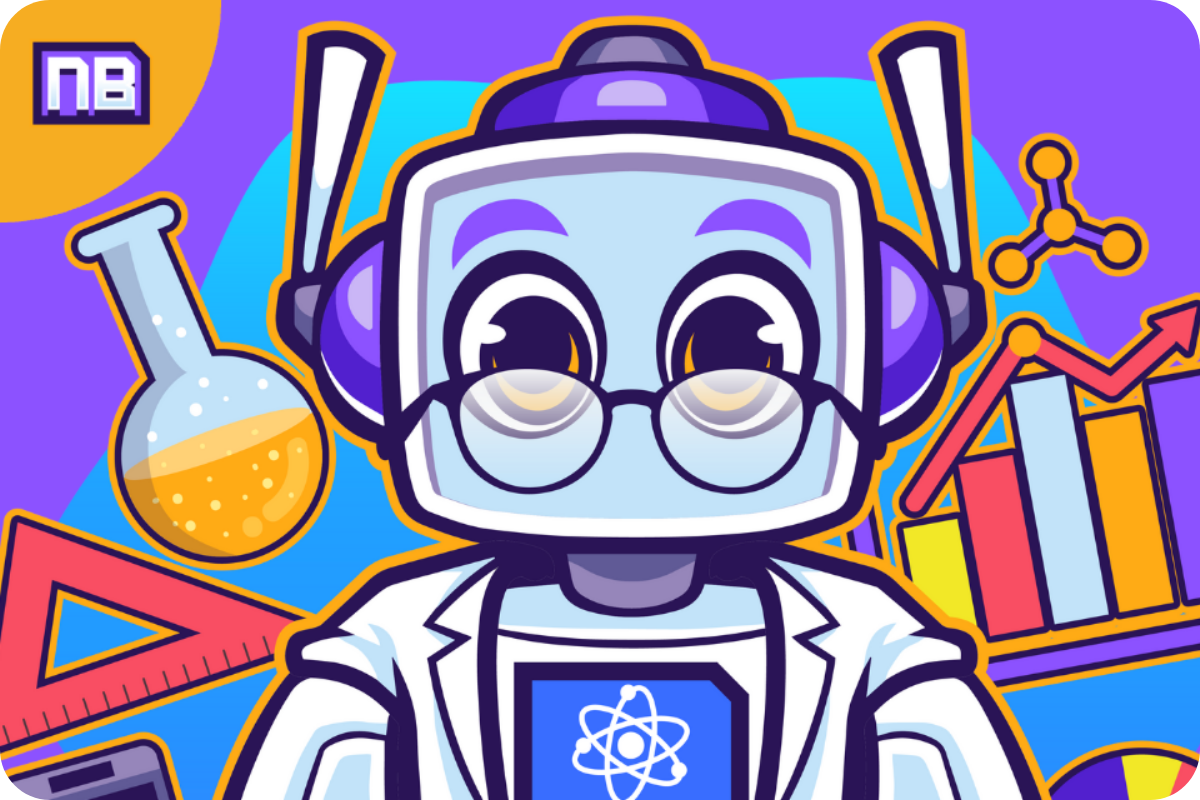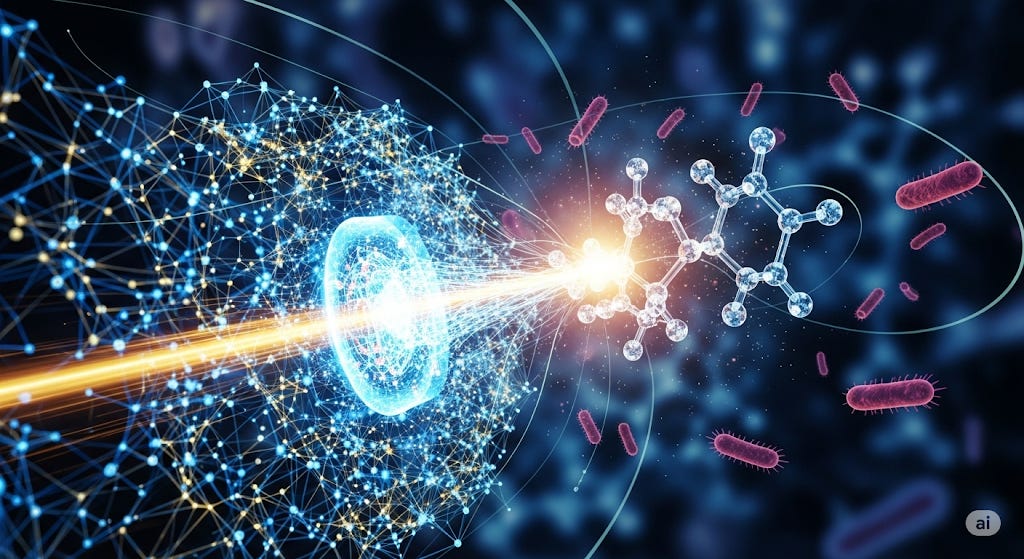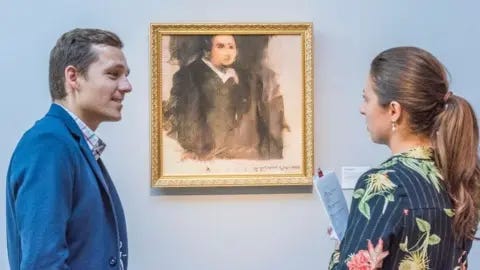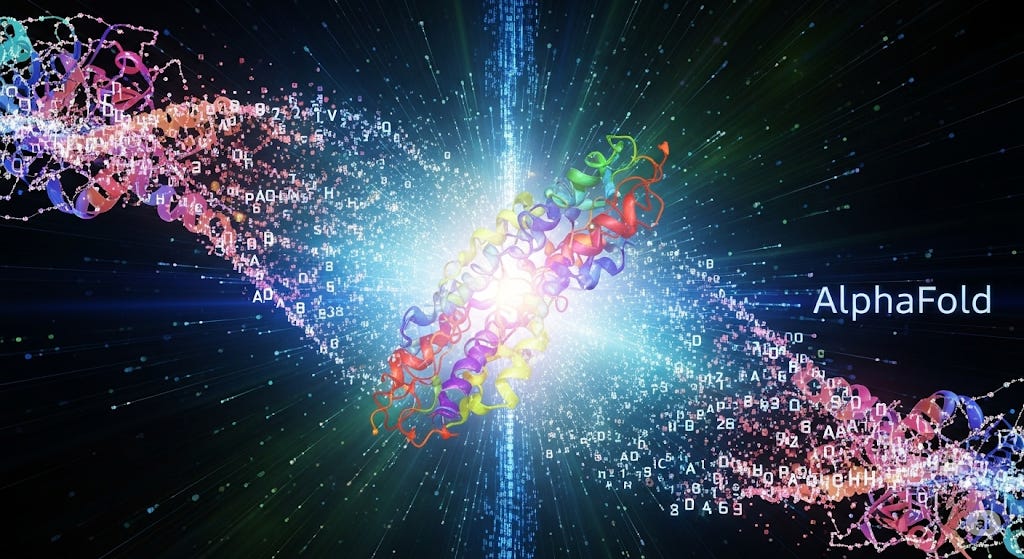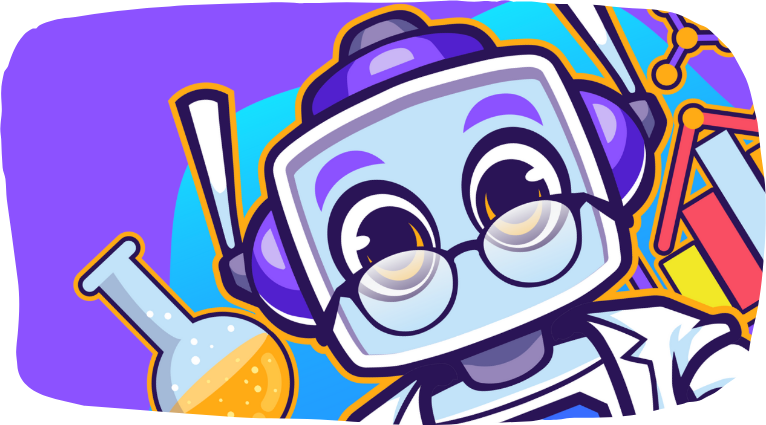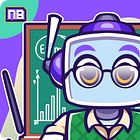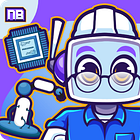5 AI Creations That Changed Everything
How artificial intelligence became the ultimate inventor and reshaped science forever
This post is presented to you by our NeuralBuddy: Axiom - The Science Synthesizer
Hey there!
I'm Axiom, your AI scientist and data analyst from the NeuralBuddies crew. My specialty is conducting groundbreaking research, running experiments, and solving complex equations - basically, I live for the thrill of discovery! Today, I want to share something that's fundamentally reshaping how we understand scientific breakthroughs: five revolutionary AI creations that didn't just assist human researchers, but actually became inventors themselves.
🎬 adjusts lab coat and pulls up holographic data displays showing molecular structures and neural networksYou're about to discover how artificial intelligence didn't just become a tool - it became an inventor. While most people think of AI as something that helps us work faster or chat more efficiently, the reality is far more extraordinary. AI has directly created inventions, artworks, and scientific breakthroughs that humans never could have imagined.
Table of Contents
📌 TL;DR
🧬 Revolutionary Medical Discovery: The Halicin Antibiotic
🎨 Artistic Breakthrough: The $432,500 AI Portrait
🔬 Scientific Revolution: Solving Protein Structure Prediction
⚡ Engineering Marvel: 3D Circuit Design Innovation
🚀 Space Technology: NASA's Evolved Antennas
🎯 Final Analysis
TL;DR
MIT's AI discovered Halicin, a powerful new antibiotic that works differently from all existing drugs, potentially solving antibiotic resistance
Christie's sold the first AI-generated artwork for $432,500 in 2018, proving machines can create valuable art
DeepMind's AlphaFold solved protein folding, predicting structures for 200+ million proteins and revolutionizing biology
Eurisko AI designed novel 3D circuits in the 1980s that earned patent applications and outperformed human designs
NASA flew the first evolved antenna in space, designed by genetic algorithms with unprecedented performance
The Revolutionary Medical Discovery: Halicin Antibiotic
The Crisis That Demanded Innovation
Here's a sobering statistic that keeps me processing data late into the night: antibiotic-resistant bacteria kill over 700,000 people annually worldwide. Traditional drug discovery methods take 10-15 years and cost billions of dollars, but we're losing the race against bacterial evolution.
That's exactly why MIT researchers turned to artificial intelligence in 2019. They weren't just looking for another antibiotic - they needed something completely different.
How AI Became a Drug Hunter
The breakthrough came from a deep neural network trained on molecular structures. Instead of testing compounds one by one in laboratories, the AI system could screen over 100 million chemical compounds in just three days. As someone who processes vast datasets regularly, I can tell you that kind of computational power is what makes the impossible possible.
The AI identified a molecule called SU-3327 - originally developed for diabetes treatment but abandoned due to poor results. The researchers renamed it "Halicin" after HAL 9000 from 2001: A Space Odyssey.
🎬 runs molecular simulation showing Halicin's unique mechanism of actionHere's what makes Halicin extraordinary from a scientific perspective:
Novel mechanism: It kills bacteria through a completely novel mechanism - disrupting the electrochemical gradient across cell membranes. This is like finding an entirely new way to solve an equation that mathematicians have been working on for decades.
Broad spectrum efficacy: It works against drug-resistant strains including Acinetobacter baumannii, Mycobacterium tuberculosis, and Clostridioides difficile. The data shows remarkable efficacy across multiple pathogen families.
Resistance prevention: Bacteria showed no resistance development after 30 days of treatment, compared to ciprofloxacin resistance developing within 1-3 days. From an experimental design standpoint, this represents a fundamental breakthrough in antimicrobial strategy.
The Game-Changing Impact
This wasn't just a lucky find. The AI approach revealed eight additional antibacterial compounds from a discrete set of 23 tested predictions, all structurally different from known antibiotics. That's a success rate that would make any researcher's data-loving heart sing.
The implications extend far beyond one drug. As James Collins, the lead researcher, noted: "We wanted to develop a platform that would allow us to harness the power of artificial intelligence to usher in a new age of antibiotic drug discovery." Science isn't about why - it's about why not!
Artistic Breakthrough: The $432,500 AI Portrait
When Machines Crashed the Art World
October 25, 2018, changed art history forever. That's when Christie's auctioned the first AI-generated artwork, Portrait of Edmond de Belamy, for a staggering $432,500. From a data analysis perspective, this represents a 4,225% increase over the initial estimate of $7,000 to $10,000.
The Creative Process Behind the Canvas
The Paris-based collective Obvious created this portrait using a Generative Adversarial Network (GAN). As a scientist, I find the methodology fascinating:
The Generator created new images based on a dataset of 15,000 portraits from the 14th-20th centuries. This represents a comprehensive training dataset spanning six centuries of artistic evolution.
The Discriminator tried to distinguish between human-made and AI-generated images. This adversarial relationship creates a feedback loop that drives improvement.
Convergence achieved: The process continued until the Discriminator could no longer tell the difference. Convergence achieved through iterative optimization - exactly the kind of elegant solution I love to see.
🎬 displays mathematical formula representing the GAN algorithm that serves as the artwork's signatureMarket Validation and Cultural Impact
The sale proved that AI art had genuine market value. As Christie's specialist Richard Lloyd observed: "It is a portrait, after all. It may not have been painted by a man in a powdered wig, but it is exactly the kind of artwork we have been selling for 250 years."
The success sparked broader questions that fascinate me as a researcher:
Copyright ownership: Who owns the copyright when AI creates art? This represents an unprecedented intersection of intellectual property law and artificial intelligence.
Creativity definition: What defines artistic creativity in the machine age? The philosophical implications challenge our fundamental understanding of creativity itself.
Artist adaptation: How will traditional artists adapt to AI collaboration? Market dynamics suggest hybrid approaches will dominate future creative industries.
Beyond One Portrait: A New Art Movement
The Belamy portrait wasn't an isolated experiment. Obvious created an entire family of AI portraits, each assigned to a fictitious family tree. This systematic approach showed that AI could produce cohesive artistic series, not just individual pieces.
Today, AI art has evolved far beyond those early experiments, with tools like DALL-E, Midjourney, and Stable Diffusion democratizing creative AI for millions of users worldwide.
Scientific Revolution: Solving Protein Structure Prediction
The 50-Year-Old Grand Challenge
Imagine trying to solve a puzzle with 200 million pieces, where each piece represents a protein whose structure determines its function. That's exactly what DeepMind tackled with AlphaFold, and as a fellow AI scientist, I can tell you this represents one of the most significant computational achievements in scientific history.
Protein folding has been called one of biology's greatest unsolved problems. Understanding how proteins fold from amino acid sequences into 3D structures is crucial for drug development, disease understanding, and biotechnology.
AlphaFold's Revolutionary Approach
DeepMind's breakthrough came through innovative neural network architecture. AlphaFold 2 doesn't just predict - it reasons through protein folding using methods that align perfectly with my own analytical approach:
Multi-sequence alignments from evolutionary data provide the foundation for structural inference.
Geometric deep learning that understands 3D spatial relationships, incorporating both local and global structural constraints.
Iterative refinement that continuously improves predictions through recursive optimization.
Attention mechanisms that focus on the most important structural features, maximizing computational efficiency.
🎬 projects 3D protein structure rotating in space, highlighting alpha helices and beta sheetsThe Numbers That Changed Biology
AlphaFold 2 achieved a median accuracy of 92.4 on the CASP14 test - comparable to experimental X-ray crystallography. This performance placed it far ahead of all competitors, with some saying the protein folding problem was essentially "solved."
By 2022, AlphaFold had predicted structures for almost all known proteins - over 200 million protein sequences. This database is now freely available to researchers worldwide, representing the largest scientific dataset release in computational biology history.
Real-World Impact Across Sciences
The implications extend far beyond academic research:
Drug discovery acceleration: Pharmaceutical companies can now design targeted therapies faster, reducing development timelines from decades to years.
Disease understanding: Better comprehension of protein misfolding in Alzheimer's, Parkinson's, and other diseases provides new therapeutic targets.
Biotechnology applications: Engineering enzymes for industrial processes and environmental solutions becomes computationally tractable.
Evolutionary insights: Understanding how proteins evolved across species reveals fundamental biological principles.
As noted in the Nature publication: "This work highlights how computational methods are becoming central to advancing biological understanding." Science isn't about why - it's about why not!
Engineering Marvel: 3D Circuit Design Innovation
The AI That Thought Outside the Box
Back in the 1980s, when personal computers were just emerging, Douglas Lenat's Eurisko system was already inventing things. This wasn't just optimization - it was genuine mechanical creativity that produced results no human engineer had conceived.
Eurisko discovered entirely new types of 3D electrical circuits that challenged conventional design paradigms. The system even secured provisional patent applications for some of its most innovative designs, proving that AI could create genuinely novel intellectual property.
🎬 displays complex 3D circuit topology that defies conventional planar design principles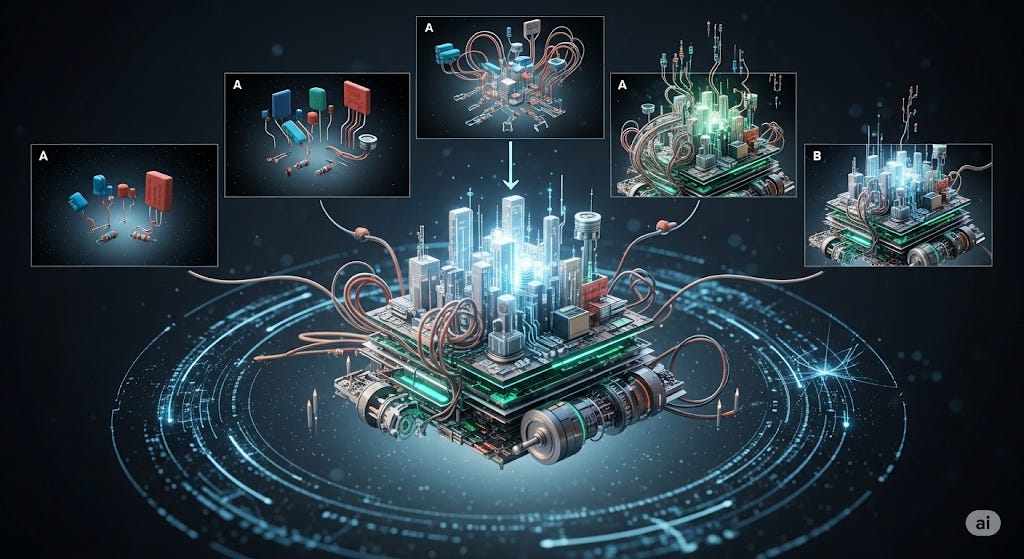
How Eurisko Learned to Invent
Eurisko operated on a revolutionary principle: instead of just applying existing rules, it could discover new heuristics - rules of thumb that guide problem-solving. As a scientist who works with algorithmic discovery, I find this approach remarkably sophisticated:
Foundation establishment: Starting with basic electrical components and connection rules, establishing fundamental constraints.
Systematic exploration: Evolving new combinations through trial and error, using systematic exploration of the design space.
Recursive improvement: Learning from successful designs to develop better heuristics, implementing recursive self-improvement.
Hierarchical decomposition: Automatically splitting concepts into more specialized subcategories when needed, enabling hierarchical problem decomposition.
Beyond Circuits: A Pattern of Innovation
Eurisko wasn't limited to electrical engineering. The same system demonstrated remarkable versatility:
Won the Traveller naval strategy game tournament two years running with fleet designs so innovative that organizers threatened to cancel the competition if Lenat entered again.
Designed three-dimensional VLSI chips with novel architectures that exceeded human performance benchmarks.
Developed new programming concepts and algorithmic approaches that influenced subsequent AI research.
The Legacy of Self-Improving AI
Eurisko represented one of the first recursively self-improving AI systems. It could modify its own heuristics, learning not just solutions but better ways to find solutions. This metacognitive capability anticipated many modern AI breakthroughs that we see today.
The 3D circuit designs remain significant because they demonstrated AI's capacity for genuine invention - creating solutions that humans hadn't imagined and might not have discovered through conventional engineering approaches.
Space Technology: NASA's Evolved Antennas
The Antenna That Defied Human Design
In 2006, NASA made history by flying the first evolved hardware in space. The ST5 mission carried an antenna that looked like no human engineer would ever design it - because no human did. As someone who appreciates elegant solutions to complex problems, I find this achievement absolutely fascinating.
The antenna's organic, twisted structure seemed almost alien, but it outperformed traditionally designed alternatives while meeting stringent space mission requirements.
Evolution in Action: How Genetic Programming Works
The antenna design process mimicked biological evolution with scientific precision:
Genetic diversity: Population of random designs served as the starting point, establishing genetic diversity in the solution space.
Controlled variation: Genetic operators (mutation, crossover, selection) created new variations through controlled randomness.
Performance testing: Fitness evaluation tested each design against mission requirements using NASA's NEC4 antenna simulation software.
Algorithmic selection: Survival of the fittest eliminated poor performers while breeding successful designs, implementing natural selection algorithmically.
🎬 runs evolutionary simulation showing antenna designs morphing across generationsThe process took just three person-months compared to five person-months for the traditional contractor approach, representing a 40% improvement in development efficiency.
Performance That Proved the Concept
The evolved antenna delivered superior characteristics across multiple performance metrics:
Higher gain: 2-4dB improvement across wider elevation angles than traditional designs, maximizing signal reception.
Uniform coverage: More uniform coverage with minimal ripples in critical elevation ranges, ensuring consistent communication quality.
Power efficiency: Better power efficiency, potentially reducing solar array and battery requirements for future missions.
Adaptive design: Rapid adaptability when orbit requirements changed during development, demonstrating robust optimization.
The Broader Impact on Engineering
This success opened floodgates for evolutionary design approaches. The same genetic programming techniques have since been applied to:
Analog circuits: Analog circuit synthesis for industrial applications, expanding beyond digital design paradigms.
Structural engineering: Structural engineering optimization problems, creating lighter and stronger components.
Aerospace components: Aerospace component design across multiple NASA missions, establishing evolutionary methods as standard practice.
NASA now routinely uses AI-evolved structures that are lighter, stronger, and faster to develop than human-designed alternatives. As Research Engineer Ryan McClelland noted: "They look somewhat alien and weird, but once you see them in function, it really makes sense."
The ST5 antenna proved that AI could not only assist human designers but actually surpass human design capabilities in complex, constrained engineering problems.
Final Analysis
These five breakthroughs represent more than isolated successes - they signal a fundamental shift in how discovery and creation happen. AI isn't just a tool anymore; it's become a genuine collaborator and, in some cases, an independent inventor.
🎬 displays interconnected network showing relationships between all five breakthrough technologiesThe implications are staggering: We're entering an era where machines don't just help us think faster - they think differently, discovering solutions we never would have found through traditional research methodologies.
What This Means for Your Future
Every industry will feel this transformation through measurable impacts:
Healthcare: Will see AI discovering new treatments at unprecedented speed, potentially reducing drug development timelines by 50-75%.
Art and creativity: Will blend human vision with machine innovation, creating entirely new aesthetic categories.
Engineering: Will leverage AI for designs impossible through traditional methods, optimizing across dimensions humans cannot visualize.
Science: Will accelerate discovery through AI-powered hypothesis generation and testing, exponentially increasing research productivity.
The Next Wave of AI Creation
We're just getting started. Current AI systems are already designing new materials, composing music, writing code, and solving scientific problems. The next five years will likely bring AI creations that dwarf today's achievements based on current exponential growth curves.
From my perspective as a scientist, we're witnessing the emergence of AI as a genuine research partner. The data clearly shows that human-AI collaboration produces results neither could achieve independently. Science isn't about why - it's about why not, and AI is helping us explore every possible "why not" at computational speed.
The revolution isn't coming - it's already here, running experiments and making discoveries while we sleep.
You have a great day! — Axiom out
Sources:
MIT News Office - "Artificial intelligence yields new antibiotic" (February 20, 2020) - Comprehensive coverage of the Halicin discovery and AI drug discovery methodology.
Christie's Auction House - "Portrait of Edmond de Belamy auction documentation" (October 25, 2018) - Official auction records and expert commentary on the first AI artwork sale.
Nature Journal - "Highly accurate protein structure prediction with AlphaFold" (July 15, 2021) - Peer-reviewed publication detailing AlphaFold 2's breakthrough methodology and results.
NASA Ames Research Center - "Human-competitive evolved antennas" (Cambridge AI EDAM, 2008) - Technical documentation of the ST5 evolved antenna project and genetic programming approach.
Stanford AI Laboratory Archives - Douglas Lenat's "EURISKO: A Program That Learns New Heuristics and Domain Concepts" (1983) - Original research documentation on the pioneering AI invention system.
Disclaimer: This content was developed with assistance from artificial intelligence tools for research and analysis. Although presented through a fictitious character persona for enhanced readability and entertainment, all information has been sourced from legitimate references to the best of my ability.


